April 2025
The global automotive interior material market is set to grow from USD 64.04 billion in 2025 to USD 91.48 billion by 2034, with an expected CAGR of 4.19% over the forecast period from 2025 to 2034.
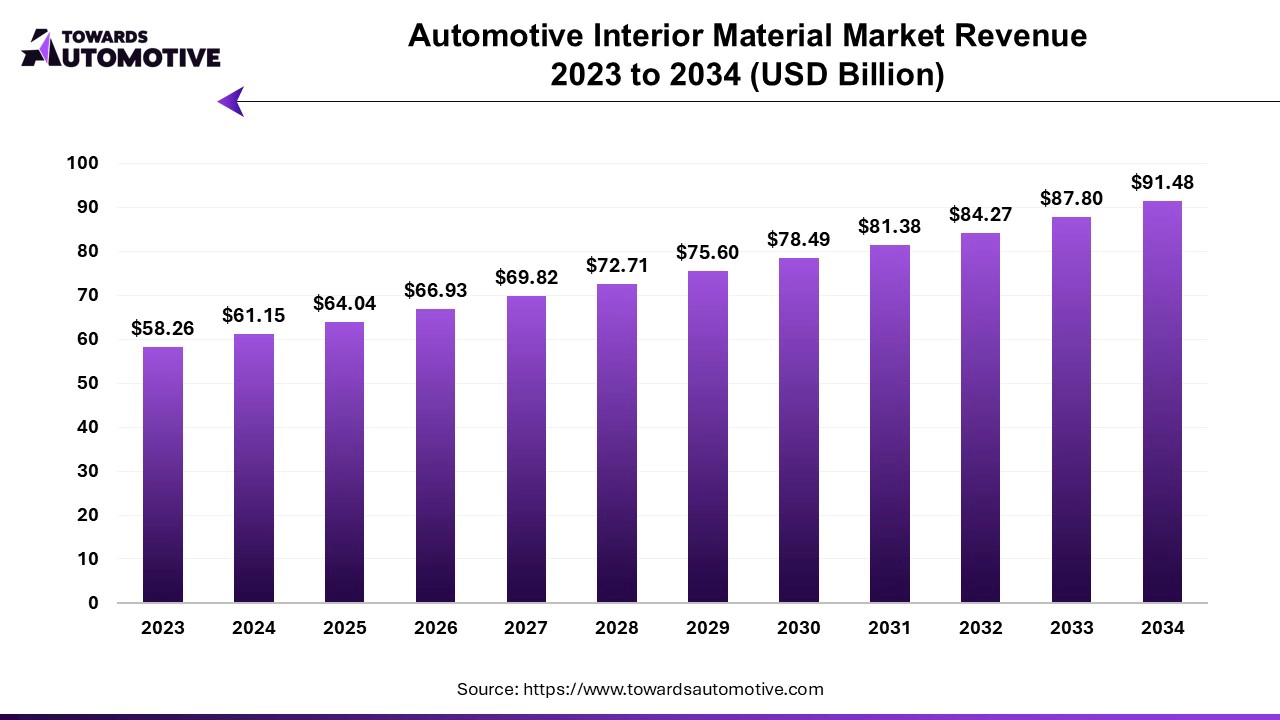
Unlock Infinite Advantages: Subscribe to Annual Membership
The automotive interior material market is experiencing substantial growth due to the rising demand for high-quality, comfortable, and aesthetically appealing vehicle interiors. As consumer preferences shift towards enhanced in-cabin experiences, automakers are increasingly focusing on providing premium materials that offer both durability and comfort. Materials such as leather, polymers, fabrics, and composites are widely used in vehicle interiors, offering a balance of luxury, functionality, and weight reduction. The growing trend towards lightweight materials, driven by the need for improved fuel efficiency and reduced emissions, is further propelling the demand for advanced interior materials.
Technological advancements in manufacturing processes and material innovations are also driving market growth. Automakers are adopting eco-friendly and sustainable materials, such as recycled plastics and organic fabrics, in response to increasing environmental concerns and stricter regulations. This shift towards sustainable materials is gaining momentum, as it aligns with the global trend of sustainability in automotive manufacturing.
Additionally, the rise in electric vehicles (EVs) and autonomous driving technology is reshaping the automotive interior material market. EVs often feature futuristic, minimalistic interiors, with an emphasis on high-tech materials and designs. Autonomous vehicles, on the other hand, are likely to prioritize comfort and luxury, further driving the demand for premium interior materials.
AI plays a transformative role in the Automotive Interior Material Market by enhancing the design, manufacturing, and personalization processes. One of the key applications of AI in this market is in material development and optimization. AI-powered algorithms can analyze vast amounts of data to recommend innovative material combinations that improve durability, comfort, and sustainability while reducing weight. This allows manufacturers to design lightweight yet robust materials that contribute to better fuel efficiency and performance, meeting stringent industry regulations and consumer demands for eco-friendly vehicles.
AI is also revolutionizing the design process by enabling advanced simulations and predictive modeling. Using AI, designers can virtually test different materials in various conditions, optimizing them for factors like temperature resistance, wear, and aesthetic appeal. This reduces the time and cost of physical prototyping, accelerating the material selection process and enhancing the overall design quality.
Additionally, AI is being used to personalize vehicle interiors based on consumer preferences. Through AI-driven systems, manufacturers can collect and analyze customer data to create bespoke interior solutions that cater to individual tastes in terms of material texture, color, and finish. This level of customization is particularly appealing in premium and luxury segments, where personalized interiors add significant value.
Moreover, AI plays a role in the automation of manufacturing processes. AI-driven robots and systems can optimize the production of automotive interior materials, ensuring precision, reducing waste, and improving overall efficiency.
The rising demand for luxurious car interiors is significantly driving the growth of the Automotive Interior Material Market. As consumers increasingly prioritize comfort, aesthetics, and premium features, automakers are focusing on enhancing the interior experience of vehicles to meet these expectations. This trend is particularly evident in the growing popularity of high-end materials such as leather, suede, and advanced composites that offer a combination of luxury, durability, and tactile appeal. Premium automakers are incorporating these materials into seats, dashboards, and door panels, elevating the overall quality and visual appeal of vehicle interiors.
Additionally, the increasing integration of advanced technologies like infotainment systems, ambient lighting, and smart features in vehicle cabins is boosting demand for materials that can complement these innovations. Luxury car buyers expect seamless integration of high-tech features with stylish and comfortable interiors, pushing manufacturers to use materials that not only look and feel premium but are also functional and adaptable to modern technological advancements.
Moreover, the shift toward electric and autonomous vehicles is amplifying this demand. Electric vehicles (EVs) and self-driving cars are often positioned as futuristic, with automakers emphasizing innovative and luxurious interiors to create a unique driving or riding experience. As a result, the need for high-quality interior materials that match the aesthetic and functional requirements of these advanced vehicles is growing rapidly.
The Automotive Interior Material Market faces several restraints that hinder its growth. One significant challenge is the high cost of premium materials like leather, advanced composites, and eco-friendly alternatives, which can increase the overall vehicle cost. Additionally, stringent government regulations regarding the use of certain materials, such as those containing harmful chemicals or non-recyclable components, limit material options for manufacturers. Fluctuating raw material prices and supply chain disruptions also pose challenges, affecting production efficiency. Lastly, the growing emphasis on sustainability requires constant innovation, which can strain research and development budgets for automakers.
Carbon fiber composites are creating significant opportunities in the Automotive Interior Material Market due to their unique combination of strength, lightweight properties, and aesthetic appeal. As automakers strive to improve fuel efficiency and reduce vehicle emissions, the demand for lightweight materials has surged. Carbon fiber composites offer a perfect solution, being much lighter than traditional materials like steel or aluminum while maintaining exceptional strength and durability. This weight reduction contributes to better fuel efficiency in internal combustion engine vehicles and extends the range of electric vehicles (EVs), addressing critical industry goals.
Beyond functional benefits, carbon fiber composites are also valued for their sleek, modern appearance, making them an attractive choice for high-end and luxury vehicle interiors. They are increasingly being used in elements such as dashboards, seat frames, and decorative trim, giving interiors a premium, high-tech look.
Moreover, the growing focus on sustainability is driving the adoption of carbon fiber composites, as they can be manufactured using eco-friendly processes and materials. As automotive manufacturers continue to innovate, carbon fiber composites present a versatile option for enhancing both performance and aesthetics, creating new opportunities for growth in the automotive interior material market. Their dual appeal of function and form makes them highly sought after in both mass-market and premium vehicles.
The plastic segment held the largest share of the market. The plastic segment is a vital driver of growth in the Automotive Interior Material Market, thanks to its versatility, durability, and cost-effectiveness. Plastics are increasingly favored by automakers for various interior components, including dashboards, door panels, seat covers, and trim, due to their lightweight nature, which contributes to improved fuel efficiency. As fuel economy becomes a priority for consumers and regulatory bodies alike, the use of lightweight materials like plastics helps manufacturers meet these demands while enhancing vehicle performance.
Moreover, advances in plastic technology have led to the development of high-performance materials that offer superior aesthetics and functionality. Innovations such as soft-touch plastics, textured finishes, and customizable colors allow automakers to create visually appealing interiors that can be tailored to diverse consumer preferences. This adaptability makes plastics an attractive option for both mass-market vehicles and luxury segments, where personalized experiences are increasingly important.
Sustainability is another factor driving the growth of the plastic segment. With rising awareness of environmental issues, manufacturers are increasingly adopting recycled and bio-based plastics for automotive interiors. This shift not only aligns with consumer demand for eco-friendly products but also helps automakers meet stringent regulatory requirements regarding sustainability.
Additionally, the integration of smart technologies into vehicle interiors is boosting the demand for advanced plastic materials that can support features like touchscreens, integrated controls, and lighting.
The dashboard segment led the industry. The dashboard segment plays a crucial role in driving the growth of the Automotive Interior Material Market, as it is one of the most prominent and visible components of a vehicle's interior. Dashboards not only serve functional purposes, such as housing essential controls and instrumentation, but they also significantly impact the overall aesthetic appeal of the cabin. As consumer preferences shift toward more stylish and technologically advanced vehicles, automakers are investing in high-quality materials for dashboards, including soft-touch plastics, leather, and advanced composites.
Additionally, the increasing integration of advanced technology, such as infotainment systems, touchscreen displays, and driver assistance features, has heightened the demand for innovative dashboard materials that can accommodate these functionalities while providing a seamless user experience. Manufacturers are now focused on creating dashboards that are not only visually appealing but also lightweight and durable, aligning with the industry's push for improved fuel efficiency and reduced emissions.
Furthermore, the growing trend toward electric and autonomous vehicles is prompting designers to rethink dashboard layouts and materials, leading to the exploration of sustainable and eco-friendly options. As dashboards evolve to meet these changing demands, they will continue to be a significant driver of growth in the Automotive Interior Material Market.
The passenger vehicles segment dominated the market. The passenger vehicle segment is a significant driver of growth in the Automotive Interior Material Market, primarily due to the increasing demand for comfort, aesthetics, and advanced features among consumers. As more individuals prioritize their driving experience, automakers are focusing on enhancing the interiors of passenger vehicles by utilizing high-quality materials such as leather, premium fabrics, and advanced composites. These materials not only improve the overall look and feel of the cabin but also contribute to safety and functionality.
The rise of electric and hybrid vehicles further propels the demand for innovative interior materials, as manufacturers aim to create modern, high-tech environments that appeal to environmentally conscious consumers. This shift is leading to the adoption of lightweight and sustainable materials that help reduce the overall weight of the vehicle, thus improving fuel efficiency and range.
Additionally, advancements in technology, such as integrated infotainment systems and smart controls, necessitate the use of materials that can support these features while maintaining aesthetic appeal. As consumers increasingly seek personalized and luxurious experiences in their passenger vehicles, the automotive interior material market will continue to grow, driven by the evolving needs and preferences of modern drivers.
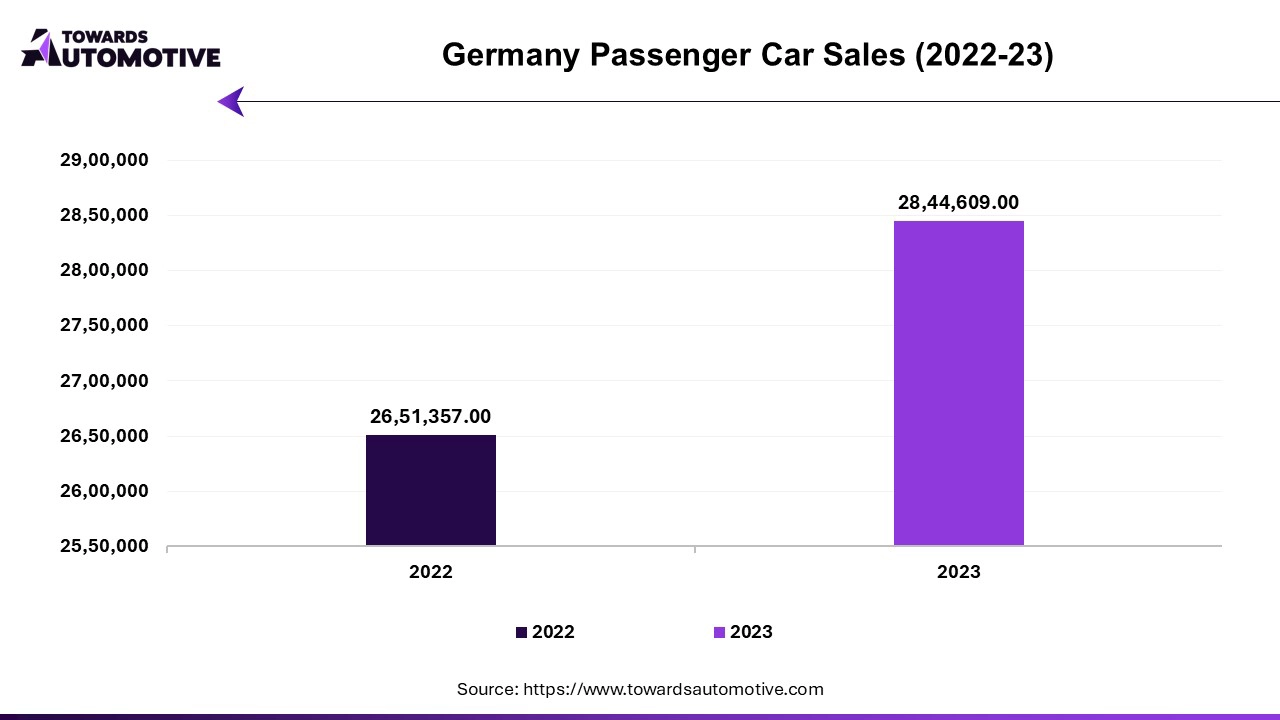
The Asia-Pacific region dominated the automotive interior materials market in 2024, driven by increasing urbanization, rising disposable incomes, and rapid economic development.
China emerged as the leading country in this market, with growing consumer preference for aesthetically appealing vehicle interiors playing a key role in market expansion. Additionally, millennials’ demand for innovative interior designs, coupled with rising disposable incomes, is expected to further fuel market growth in China.
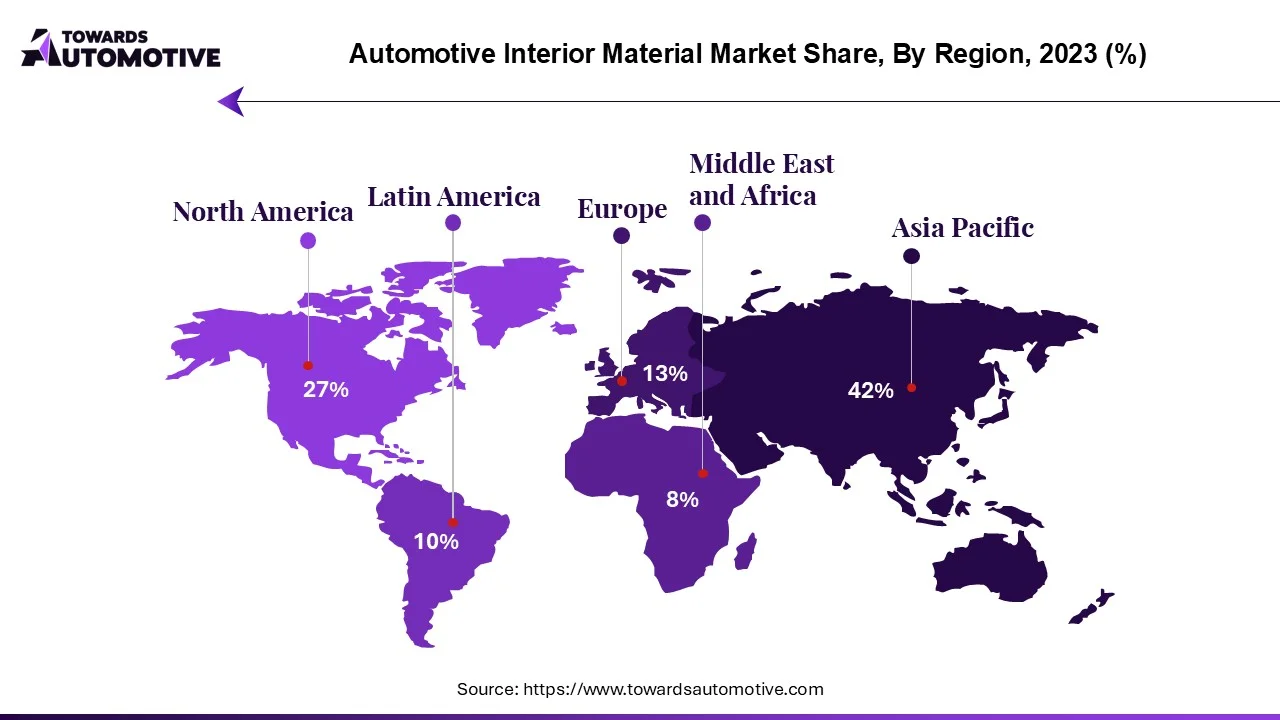
North America is projected to be the fastest-growing region during the forecast period, supported by a well-established automotive industry and the strong presence of key manufacturers. The region is experiencing increasing demand for high-quality interior materials that offer a balance of durability, comfort, and aesthetics. Furthermore, stringent safety regulations and the adoption of advanced technologies are contributing to market expansion in North America.
In the U.S., market growth is primarily driven by a rising preference for stylish designs and enhanced vehicle interiors. The growing presence of advanced technologies and improved materials, along with the increasing adoption of larger displays, is further propelling the automotive interior materials market in the country.
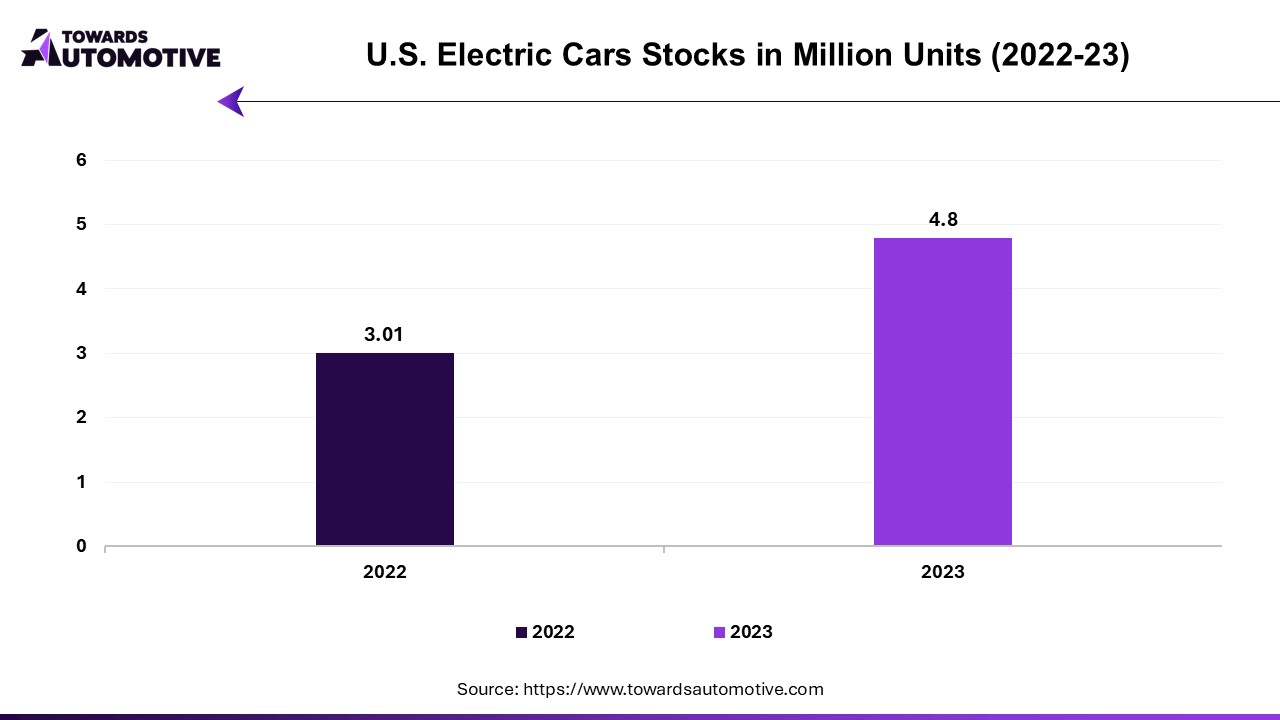
Asia Pacific is expected to grow with a significant CAGR during the forecast period. The growth of the Automotive Interior Material Market in the Asia Pacific (APAC) region is significantly driven by rising disposable income, increased automotive production, and the advent of autonomous vehicles. As disposable incomes continue to rise across countries like China, India, and Southeast Asia, consumers are more willing to invest in personal vehicles, particularly in the luxury and premium segments. This shift in consumer spending habits has led to a heightened demand for high-quality interior materials that offer enhanced comfort, aesthetics, and advanced features. Automakers are responding by incorporating premium materials, such as leather, advanced composites, and eco-friendly textiles, to meet these evolving consumer preferences.
In addition to rising disposable incomes, the robust automotive production landscape in APAC is a crucial growth factor. The region is home to numerous global and local automakers, which contributes to a competitive environment that fosters innovation in automotive interior materials. Manufacturers are increasingly investing in research and development to produce lightweight and durable materials that enhance vehicle performance while complying with stringent environmental regulations.
Furthermore, the rise of autonomous vehicles is creating new opportunities within the automotive interior material market. As these vehicles prioritize user experience and comfort, they require innovative interior designs and materials that facilitate interactive and functional spaces. This demand for modern, tech-oriented interiors is driving automakers to explore advanced materials that support smart features, further propelling the growth of the automotive interior material market in the Asia Pacific region.
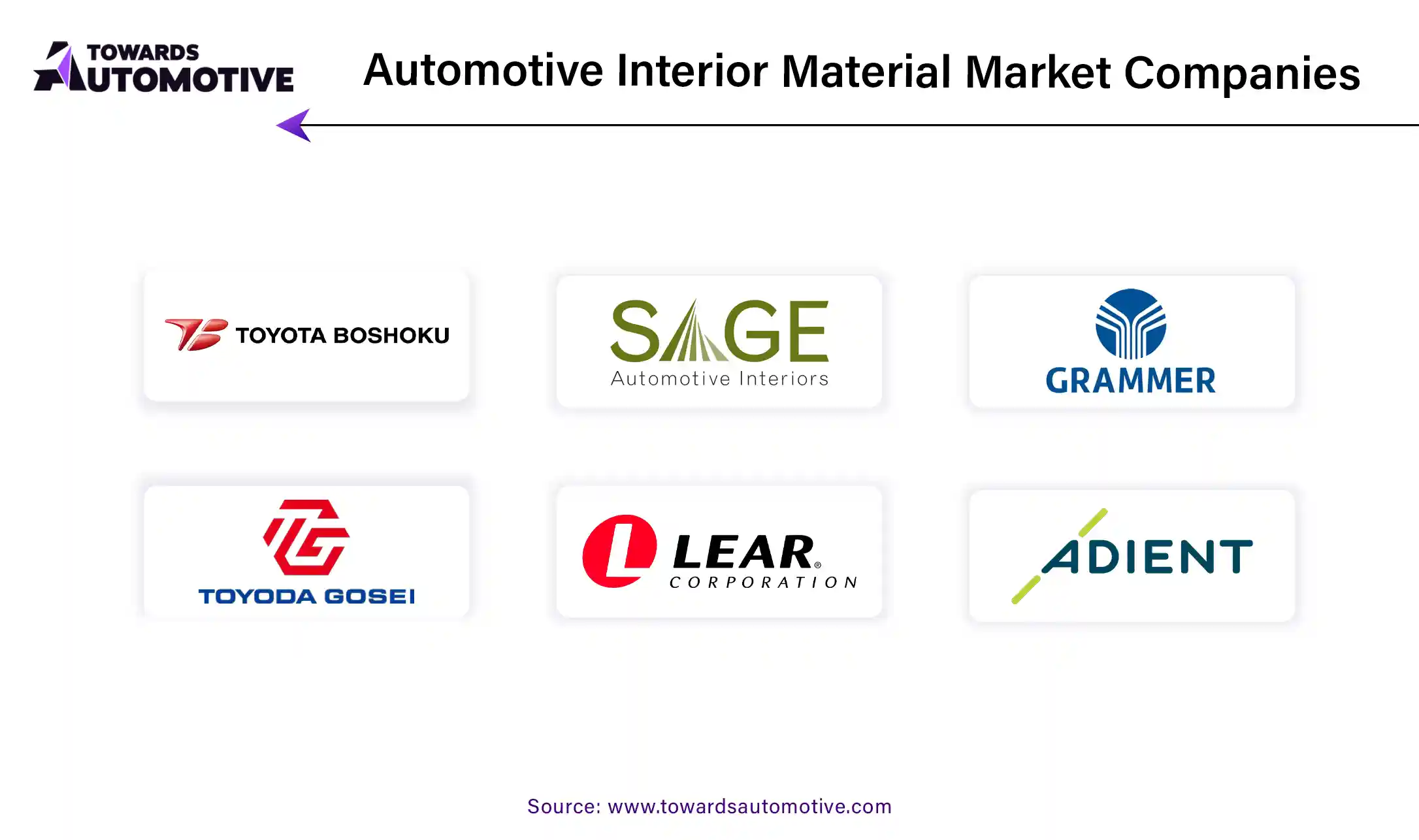
By Product
By Application
By Vehicle Type
By Region
April 2025
April 2025
April 2025
April 2025
We offer automotive expertise for market projections and customizable research, adaptable to diverse strategic approaches.
Contact Us